A broad variety of instruments belongs to the woodwind family, such as the **recorder** and the **bassoon**.
A woodwind instruments list typically includes popular instruments like flute, clarinet, oboe, bassoon, and saxophone. These instruments produce sound by blowing air into them through a mouthpiece or reed. Each woodwind instrument has a unique sound and is commonly used in orchestras, bands, and solo performances.
In this article we will summarize the main instruments in this family, and give an honorable mention to some of the wonderful lesser-known auxiliary instruments.

What are woodwind instruments?
ONE
These used to all be made of wood, and they are played by blowing air (or wind) into a mouthpiece or reed, hence the name “woodwind”. Nowadays, some of the instruments are made from plastic and metal, but the way they are played has not changed for centuries.
The woodwind family is made up of a large number of instruments, some more well known than others. The “main” instruments are flute, oboe, clarinet, bassoon and saxophone, but did you know that the recorder, and even the bagpipes are also in the family?
Some family members are also known as reed instruments. These include the oboe, clarinet, and saxophone. These instruments need a single or double reed made out of cane to make a sound. The woodwind family also includes instruments without reeds, such as the flute and recorder.
The recorder is an ideal first instrument. In fact, many musicians start their musical journey playing the recorder.
It’s very easy (sometimes too easy!) to produce a sound on the recorder, they are a doddle to clean and are quite cheap. Student recorders are made out of plastic and fairly indestructible (that’s not a challenge!).
The recorder isn’t just for primary school children! Some musicians choose to play this versatile wind instrument professionally and there is some fantastic repertoire written for the recorder.

Best woodwind instruments to buy
TWO
We would recommend the Aulos 205A Robin Descant Recorder as a starting point.
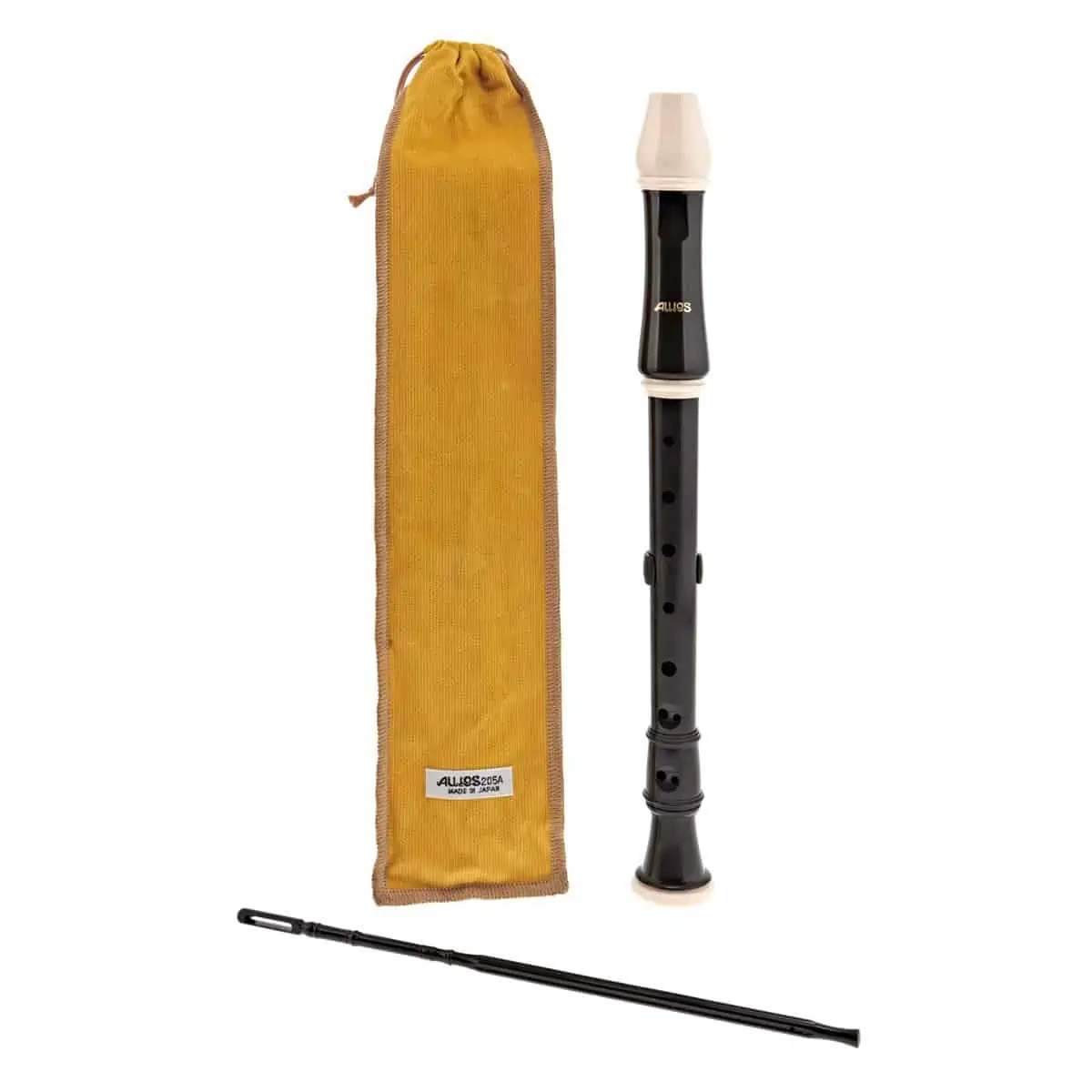
COMES WITH: Cloth bag, finger chart and cleaning rod
FEATURES: Portable and light with a detachable thumb rest for extra comfort
Aulos 205A Robin
Descant Recorder
When you check the price above, you’ll see there are loads of great places to buy this item. Our personal favorite is Gear4music.
It is the largest music retailer in the UK and fast becoming the most respected online music shop in the US too. Their customer service is excellent, they have competitive prices, really fast shipping, and usually have the longest guarantee.
Most professional musicians use Gear4music, so there is no reason why you shouldn’t too!
- Durable and easy to look after
- Very easy to produce the first sounds
- Perhaps not as nice as a wooden recorder
The professional musician who wrote this article combined many things,
from the product build, manufacturer’s reputation through to feedback
from other users, to create our famous TedScore™.
The flute is one of the oldest known woodwind instruments. Archaeologists have discovered flutes made out of ivory and bone which are 42,000 years old!
Flutes today are commonly made of metal. Student flutes are usually made of nickel, and professional ones are often made of silver.
The sound is produced by blowing air across a hole in the head-joint, a bit like blowing over the top of a bottle. Notes are changed by pressing keys which open and close tone holes underneath.
The flute makes a clear, melodious sound, and often has gorgeous solos in concert band and orchestral music.
It can sometimes be a little difficult to get the first sounds out of a flute, but with practice, perseverance and guidance from your teacher you’ll be flying!
A fantastic starter flute is the Yamaha YFL212. This model can either be bought with a straight head-joint or a curved one, which can be useful for younger players.
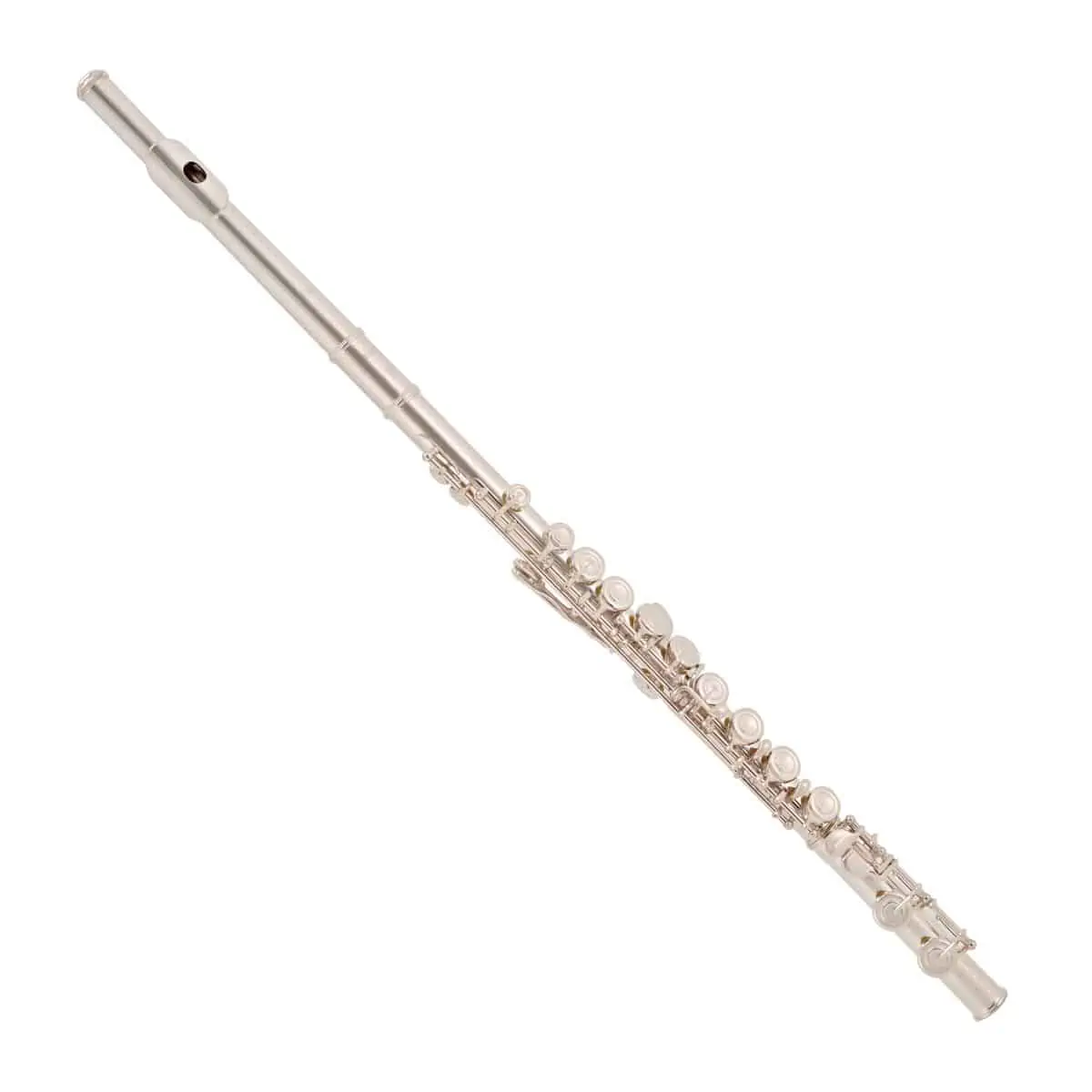
COMES WITH: Basic Kit
FEATURES: Silver plated throughout which offers great sound quality for a beginner instrument
Yamaha YFL212
When you check the price above, you’ll see there are loads of great places to buy this item. Our personal favorite is Gear4music.
It is the largest music retailer in the UK and fast becoming the most respected online music shop in the US too. Their customer service is excellent, they have competitive prices, really fast shipping, and usually have the longest guarantee.
Most professional musicians use Gear4music, so there is no reason why you shouldn’t too!
- Very durable and portable
- Very easy to produce the first sounds
- There are cheaper models available
The professional musician who wrote this article combined many things,
from the product build, manufacturer’s reputation through to feedback
from other users, to create our famous TedScore™.
The clarinet is a single-reed instrument. The player attaches a single reed to the mouthpiece, and it is held in place with a contraption called a ligature. The sound is produced when air is blown down the tube making it vibrate. It’s fairly easy to make a sound, but it’s important to make sure that you have an appropriate strength reed. They come in different strengths from 1 all the way up to 5. The bigger the number, the tougher the reed.
Student clarinets are made from plastic and professional ones from wood, and they all produce a warm, rich sound.

COMES WITH: Durable body with nickel-plated keys
FEATURES: Complete pack for beginner musicians
Student Clarinet
Beginner Pack by
Gear4music
When you check the price above, you’ll see there are loads of great places to buy this item. Our personal favorite is Gear4music.
It is the largest music retailer in the UK and fast becoming the most respected online music shop in the US too. Their customer service is excellent, they have competitive prices, really fast shipping, and usually have the longest guarantee.
Most professional musicians use Gear4music, so there is no reason why you shouldn’t too!
- A great bundle, containing all of the accessories you’ll need to start playing
- 2 year warranty included
- 10 pack of reeds included, which will last for a while
- There are better sounding models on the market
The professional musician who wrote this article combined many things,
from the product build, manufacturer’s reputation through to feedback
from other users, to create our famous TedScore™.
The saxophone is sometimes mistakenly categorised as a brass instrument due to it’s shiny, brassy appearance. After all, it is often made of brass. It is, however, part of the woodwind family. It’s a single reed instrument, and it is quite easy to get the first sounds flowing. Again, just make sure that you have an appropriate strength reed.
The saxophone produces a bright, carrying tone, and is a versatile instrument. Most of the time it is associated with jazz music, but there is some wonderful classical music written for the it too.
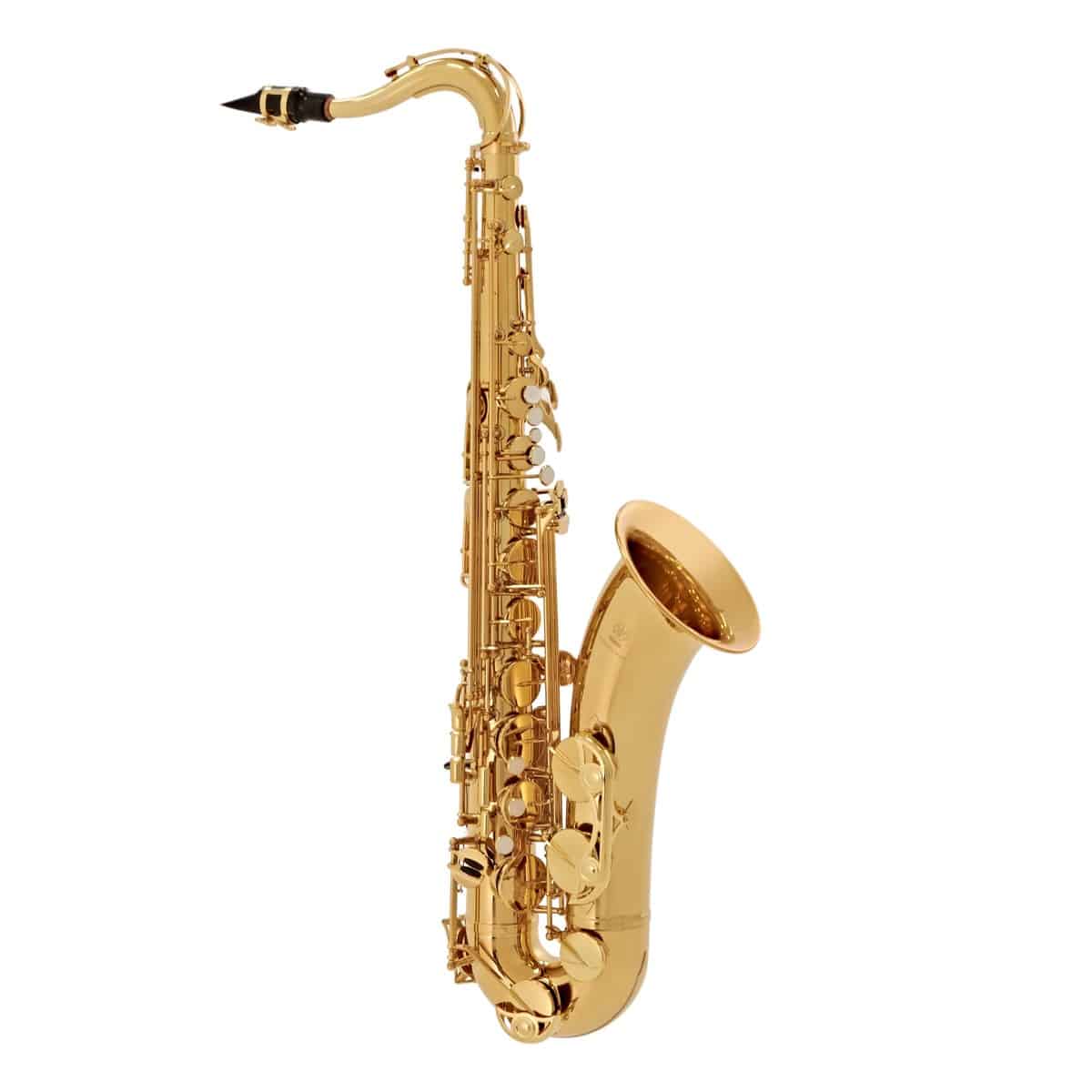
COMES WITH: a sturdy case, mouthpiece, and ligature
FEATURES: A robust and reliable alto saxophone
- Yellow brass produces a versatile tone
Trevor James
‘The Horn’
alto saxophone
When you check the price above, you’ll see there are loads of great places to buy this item. Our personal favorite is Gear4music.
It is the largest music retailer in the UK and fast becoming the most respected online music shop in the US too. Their customer service is excellent, they have competitive prices, really fast shipping, and usually have the longest guarantee.
Most professional musicians use Gear4music, so there is no reason why you shouldn’t too!
- Good value for a new instrument
- The supplied case is nice and sturdy
- Doesn’t play quite as well as some of the other student instruments
The professional musician who wrote this article combined many things,
from the product build, manufacturer’s reputation through to feedback
from other users, to create our famous TedScore™.
The oboe looks similar to the clarinet; it’s a long black instrument with silver keys. Student instruments are made from plastic and professional ones from wood.
There is one major difference between the oboe and the clarinet; the oboe is a double reed instrument. The reed is made of two pieces of cane bound together, which is then fitted directly into the top of the oboe, rather than having any kind of mouthpiece.
The oboe can be quite challenging to play initially. Students need to learn to get a sound out of the reed first and then keep that tone controlled and steady. The challenges are really worth it though. A good oboe player will have a gorgeous, sometimes haunting tone, and can often be heard adding emotion to film scores and orchestral music. It’s hard not to like the oboe!
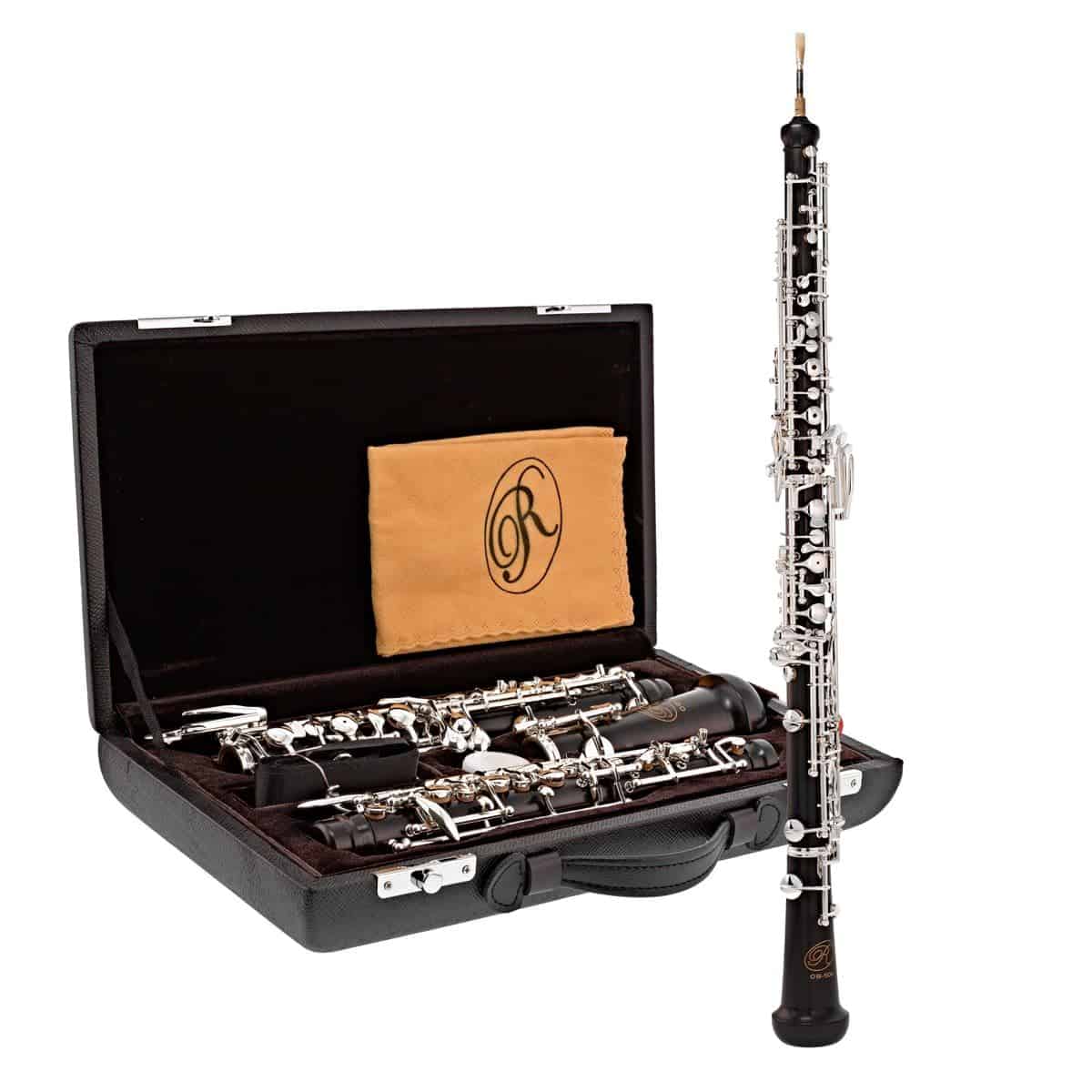
COMES WITH: Supplied With Extras Including Premium Hard Case
FEATURES: A robust and reliable alto saxophone
Rosedale
Professional Oboe
When you check the price above, you’ll see there are loads of great places to buy this item. Our personal favorite is Gear4music.
It is the largest music retailer in the UK and fast becoming the most respected online music shop in the US too. Their customer service is excellent, they have competitive prices, really fast shipping, and usually have the longest guarantee.
Most professional musicians use Gear4music, so there is no reason why you shouldn’t too!
- Good value for a new instrument
- The supplied case is nice and sturdy
- Not the cheapest student instrument
The professional musician who wrote this article combined many things,
from the product build, manufacturer’s reputation through to feedback
from other users, to create our famous TedScore™.
The bassoon is a double reed instrument. It is one of the largest and lowest members of the woodwind family, and is usually made of wood. It’s essentially a long pipe that has to be “folded” in half in order to be played comfortably. If it was straight it would be over 9 feet long!
This family member produces a low, rich sound and usually plays the lower harmony parts in ensembles.
It can be a challenging beast for any musician to start off with. Similar to the oboe, the student needs to get used to making a sound with the reeds first and keep that sound steady and controlled.
The bassoon is a large instrument, and although there are some “mini” instruments on the market, a student has to be big enough to reach all the keys (for opening and closing) and hold the bassoon up!
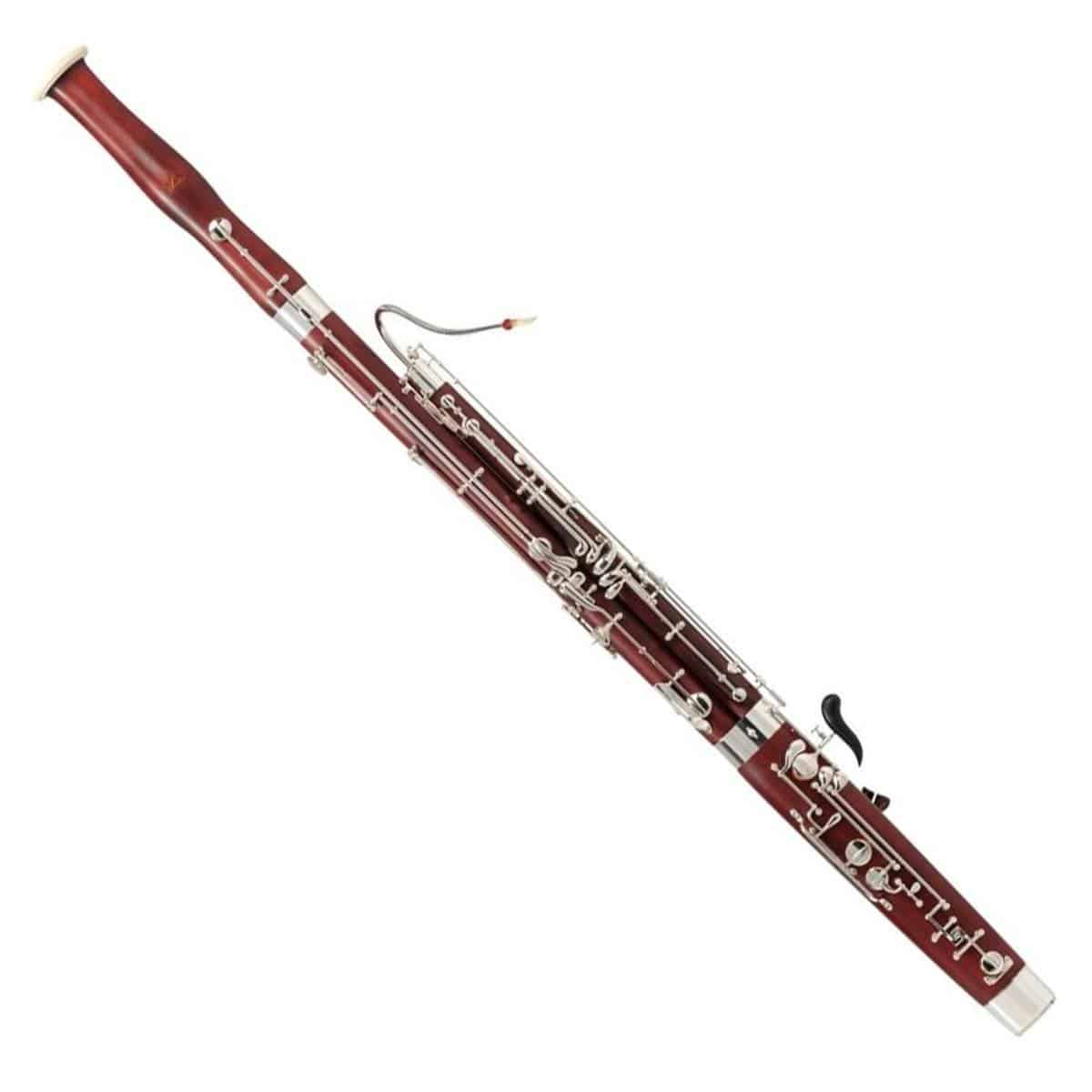
COMES WITH: 2 Crooks for Suiting Your Preference
FEATURES: Maple Body Produces Warm, Clear Tones
Schreiber S13
Shortreach Bassoon
When you check the price above, you’ll see there are loads of great places to buy this item. Our personal favorite is Gear4music.
It is the largest music retailer in the UK and fast becoming the most respected online music shop in the US too. Their customer service is excellent, they have competitive prices, really fast shipping, and usually have the longest guarantee.
Most professional musicians use Gear4music, so there is no reason why you shouldn’t too!
- Good value for a new instrument
- Rich, warm sound
- Makes a full size bassoon accessible for smaller players
- Intonation can be sensitive
- Basic keywork won’t be suitable for advanced music.
The professional musician who wrote this article combined many things,
from the product build, manufacturer’s reputation through to feedback
from other users, to create our famous TedScore™.
Auxiliary woodwind instruments
An auxiliary instrument is a lesser-known or less common member of an instrumental family. They are usually seen in orchestras and are often played by specialist musicians.
The bass clarinet is one of the biggest instruments in the family and produces a low, broad tone. At the other end of the spectrum is the E-flat clarinet which is small and high-pitched. It is sometimes paired with the piccolo to add volume and strength, with its high pitch range.
In the oboe family there’s the cor anglais. This is a larger oboe with a button bell shape at the end which looks like it’s swallowed an egg! It is usually made from wood, has a beautiful low tone, and one of its most famous melodies is the Dvorak New World Symphony (also known as the Hovis advert!).

The most common auxiliary flute is the piccolo. This is half the size of a flute and is the highest pitched of the woodwind family. Piccolos are often found in orchestras, where usually one of the flautists will play the flute and piccolo.
The biggest, and lowest of all the auxiliary instruments is the contra-bassoon. Like the standard bassoon the tube that it’s made of has to be curled up to make it a manageable size! It produces a low, growly sound which can add depth to any piece of music.
Woodwinds in the Orchestra
THREE
The woodwind section of a traditional orchestra is made up of pairs of flutes, oboes, clarinets and bassoons. You will often see a scattering of auxiliary instruments as well, especially the piccolo and cor anglais.
The saxophone is rarely seen in an orchestra, although there are a few pieces which include it, but more as a special feature than a standard orchestra member!

Woodwinds in other music
Woodwind instruments are all very versatile and can be found in lots of ensembles. These include recorder consorts, wind quintets, marching bands, drum-corps and concert bands.
Concert bands have large woodwind sections and use the majority of the woodwind family. This includes some of the more obscure instruments such as the baritone saxophone, the full range of saxophones and the all important piccolo.
Wind instruments, especially the saxophone, can be found in jazz bands as well, holding their own with loud brass instruments!
Instruments in the woodwind family
Summary
The wind instrument listtypically includes popular choices like flute, clarinet, saxophone, trumpet, trombone, and oboe. Other notable wind instruments include piccolo, bassoon, French horn, and tuba. These instruments produce sound by vibrating air in various ways, making them a crucial part of symphonies, jazz bands, and marching bands worldwide.
I hope that you have found this whistle stop tour of the woodwind family helpful.
There are many instruments to choose from when deciding to learn an instrument. Some are more challenging than others, but all will be hugely rewarding, and will allow you to make music on your own and in ensembles with your friends.

Best beginner instrument:
Aulos 205A Robin Descant Recorder
An easy way to get started on your musical journey.

Best woodwind bundle:
Student Clarinet Complete Beginner Pack by Gear4music
Everything you need to get started in a single package.

Best woodwind instrument for jazz:
Trevor James “The Horn” Alto Saxophone
An excellent beginner instrument, which will have you playing solos in no time!
FAQ's
The four main members are flute, clarinet, oboe, bassoon and saxophone, but the woodwind family also includes the recorder and even the bagpipes!
The four main members of the woodwind family are flute, clarinet, oboe and bassoon.
The main types of wind instruments are flute, clarinet, oboe, bassoon and saxophone.
The woodwind family is a very large one, with countless variations! However, the four main members are flute, clarinet, oboe and bassoon.
The two woodwind instruments that do not use reeds are the flute and the piccolo. They produce sound by blowing air across a hole or opening rather than through a reed.


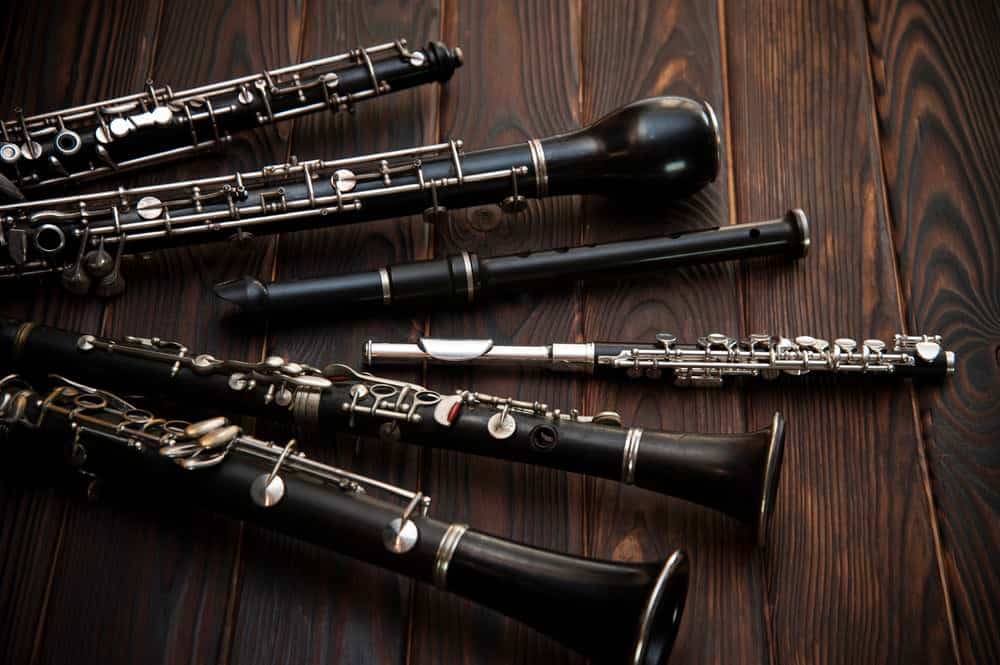
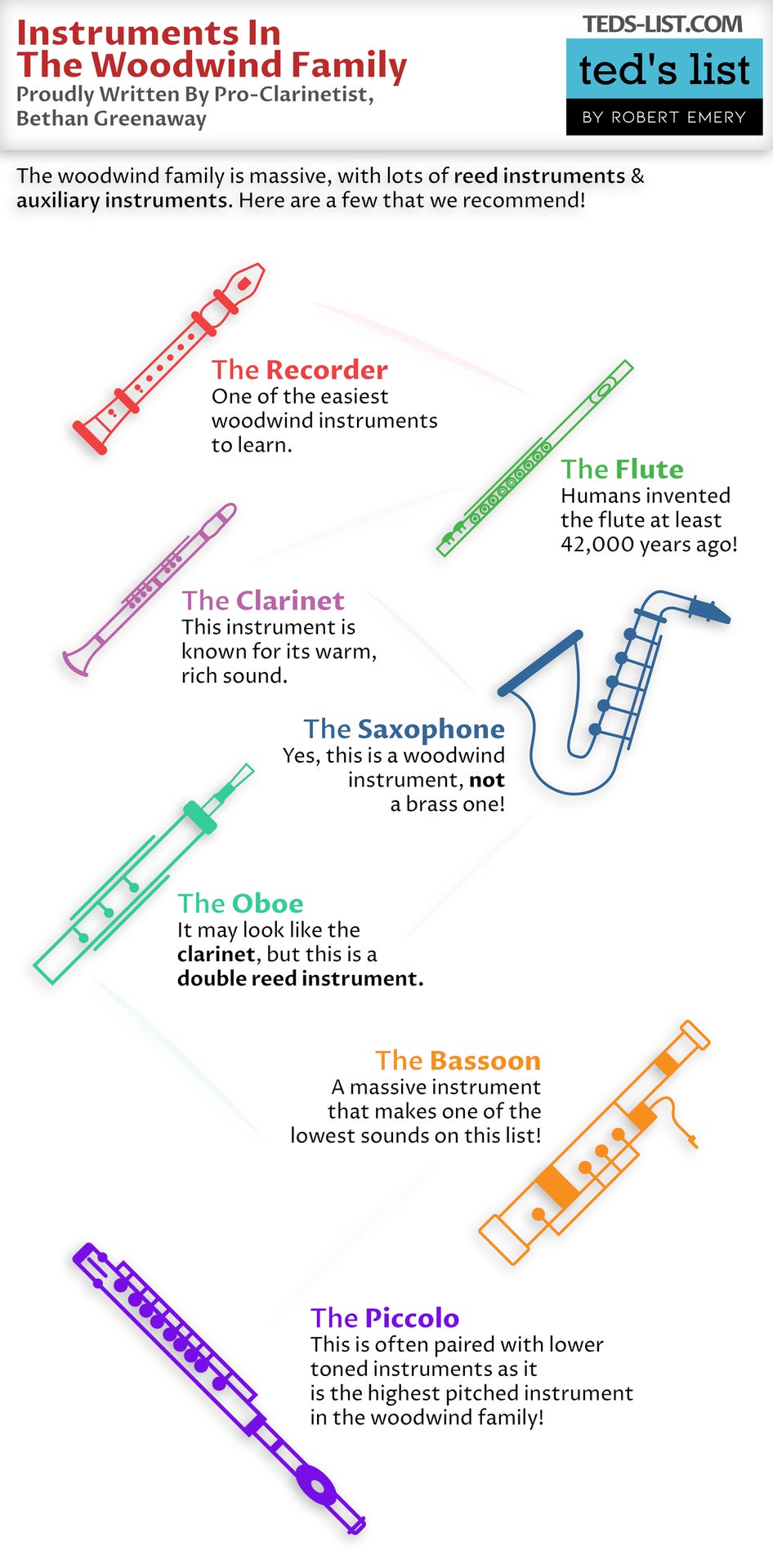







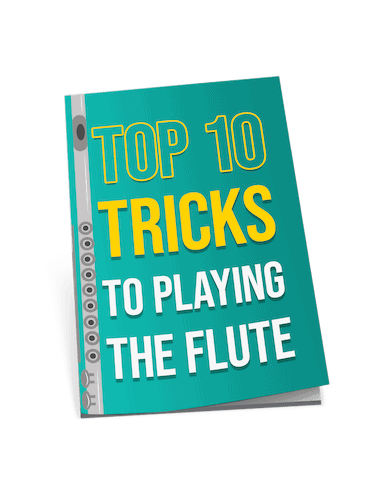
new woodwind quintet video:
https://www.youtube.com/watch?v=i5RqOyLyYf0
Huge fan of the woodwind family, I am hoping to complete my collection soon. I would love to see an article on the prices.
Hi Maggie, we have dedicated articles on the prices of each wind instrument separately. For instance, if you’re looking for flute, click here – and for clarinet, click here.